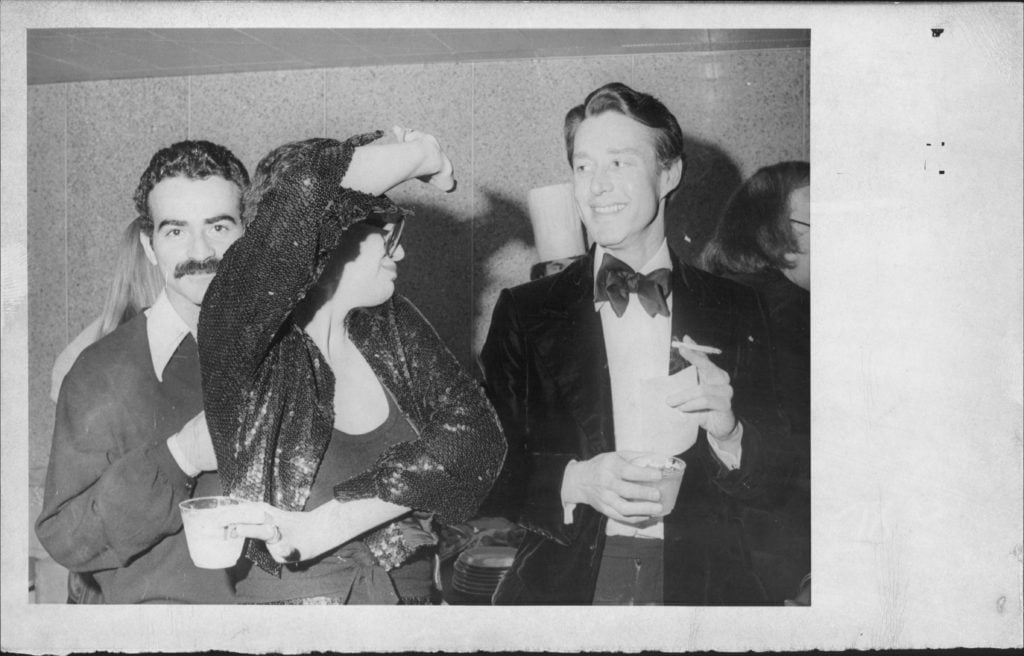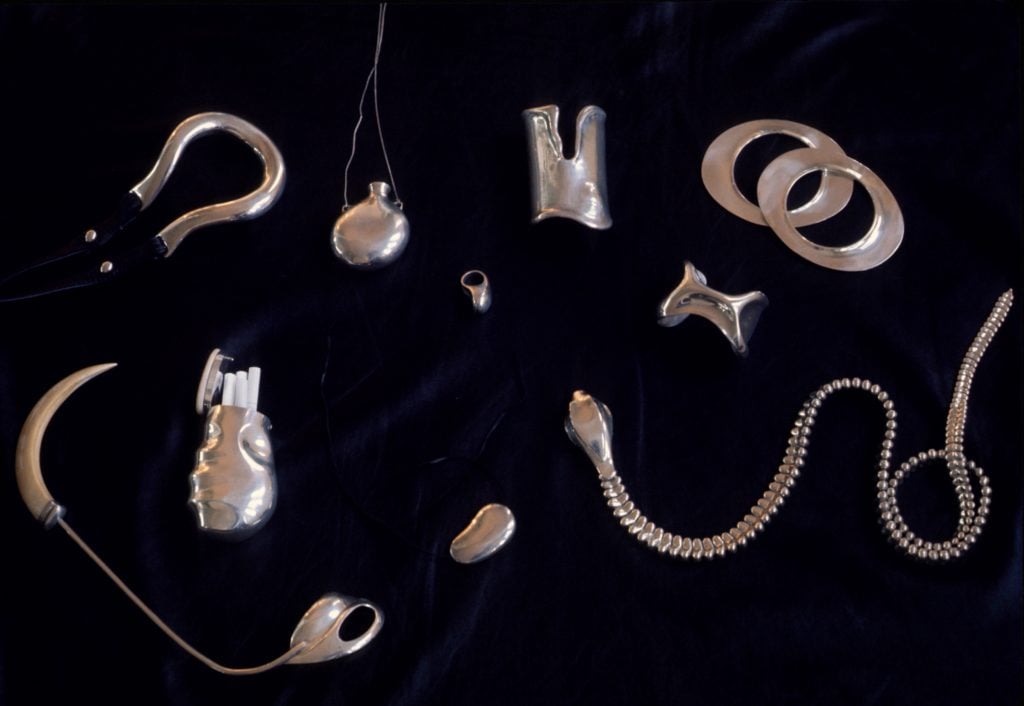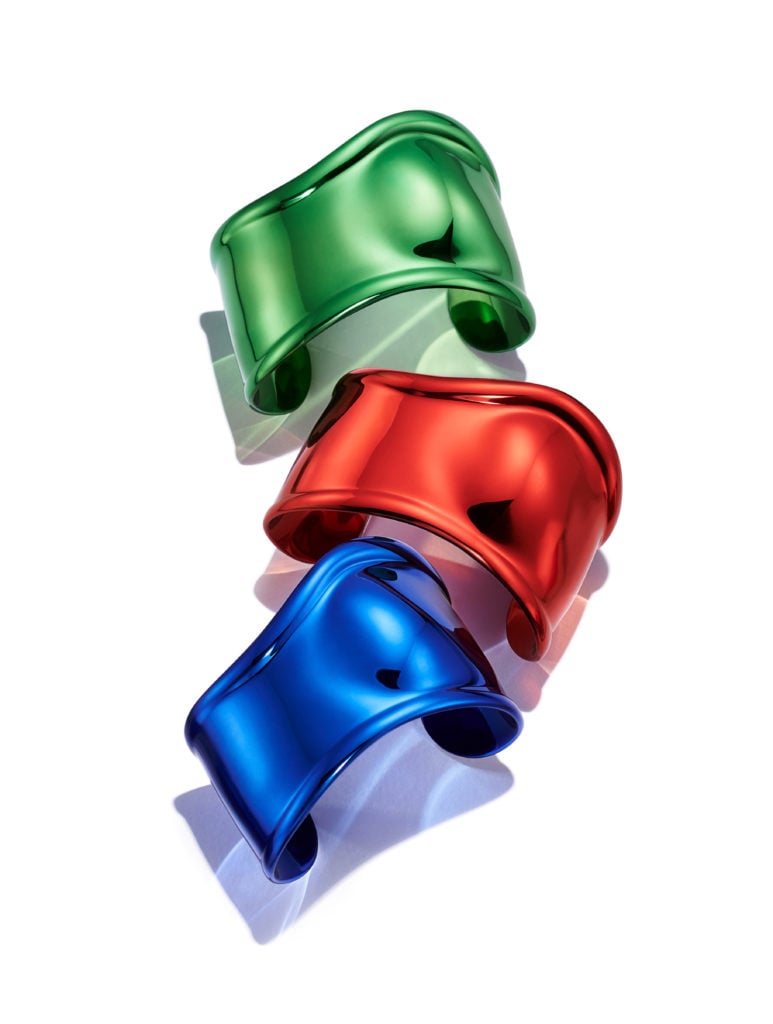The Art of Craft: How Elsa Peretti Designed Tiffany & Co.’s Bone Cuff to Draw Attention to the Elegance of a Woman’s Wrist
There are three women whose legacies are as entwined in the story of Tiffany & Co. as they are in their own: Audrey Hepburn, Paloma Picasso, and Elsa Peretti. Of all three, Peretti has easily had the strongest influence on the design of the American jewelry house, with her sensuous, otherworldly designs totaling close to 10 percent of Tiffany's annual net sales—a testament to their enduring value and to her singular taste.
Born and raised in Rome, Florence, and Switzerland, Peretti was a strong-willed girl determined to forge her own path from that of her wealthy, conservative family. She began her working life at 23 as an Italian teacher and ski instructor, before moving to Milan to pursue a degree in interior design and an apprenticeship with the architect Dado Torrigiani. After just a year, she changed course again and started modeling, first in Barcelona and then in New York City, where she reportedly arrived for the first time with a will of steel and a black eye from a boyfriend who didn't want her to leave Europe. "I was poor," she told Vanity Fair of that time, in a 2014 interview. "But in a good way."
In New York, she quickly fell into the inner circle of fashion girls, becoming one of designer Halston's favorite models alongside other household names of the late '70s scene, including Angelica Huston, Pat Cleveland, and Karen Bjornson. Peretti was also snapped up by Andy Warhol's Studio 54 crowd, and for a period, much of her life became, by her own admission, debauched, drug-fueled, and defined by wild nights out.

Victor Hugo, Elsa Peretti, and Halston. March 22, 1975. Photo by Vernon Shibla/New York Post Archives /(c) NYP Holdings, Inc. via Getty Images.
Still, no one could deny her inimitable sense of style, and at the suggestion of Halston, she eventually began designing sculptural silver jewelry crafted to encase and highlight the liquid curves of the female form. As her popularity grew among the glamazons of Gotham—Liza Minnelli was apparently a big fan of her work—she was asked to design pieces for Tiffany & Co. Later, in 1979, she was named their lead jewelry designer.
While at the house, she introduced the use of sumptuous natural materials like lacquer, jade, and rattan, inspired by her frequent trips to Japan and China. She continued to expand her line of sensual, organic forms, many of which went on to become the house's cult collections, like her bean pendants, open-heart necklaces, mesh bracelets, and diamond-by-the-yard strands, all of which are still produced today.

Elsa Peretti jewelry circa 1970 in New York. Photo by Peter L Gould/Images/Getty Images.
But no design comes close to the success of Peretti's Bone Cuff, which she designed to wear as a pair on the left and right wrists. A small rise on the inside of the object was meticulously crafted to encircle the wearer's wrist nodules, calling attention to both her strength and grace. "It takes so long to make a curve, and to make sure the curve is done well," Peretti said of her exacting design process.
In celebration of the cuff's 50th anniversary this year, Tiffany & Co has just released a new line of colorways that pay homage to Peretti's love of nature and art that celebrates bold color.

The new Elsa Peretti Bone Cuffs. Photo courtesy Tiffany & Co.
Unbeknownst to many, the cuff was originally inspired by Peretti's childhood visits to Antonio Gaudi's Casa Mila, which features an undulating facade and interconnected rooms that appear "webbed" together.
The cuff also nods to the work of another Surrealist talent, Salvador Dalí, whom Peretti befriended and modeled for in the 1960s. It also riffs on her trips to the crypt of a 17th-century Capuchin church in Rome that she took with her mother as a young girl. "My love for bones has nothing macabre about it. All the rooms [of the church] were decorated with human bones," Peretti recalled, in a statement from Tiffany & Co. "My mother had to send me back, time and time again, with a stolen bone in my little purse. Things that are forbidden remain with you forever."

Elsa Peretti's Bone Cuff sketches. Photo courtesy Tiffany & Co.
The newly released bone cuffs come in electric red, green, and blue, while a capsule collection of limited-edition good and silver styles also feature inlaid carved stones in black jade, green jade, and turquoise. Together, they recall Peretti's love of large, colorful gemstones. Each piece is inscribed with "special edition" on the inside.
Says Peretti—who is celebrating her 80th birthday this year, and whose works are housed in major museums around the world, including the Metropolitan Museum of Art and the British Museum in London—"I have always been interested in the Bone Cuff's mechanics and feel. Every jewelry piece should be as captivating and as comfortable to wear."
Follow artnet News on Facebook: Want to stay ahead of the art world? Subscribe to our newsletter to get the breaking news, eye-opening interviews, and incisive critical takes that drive the conversation forward.
Komentar
Posting Komentar